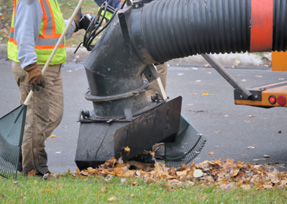Why recycle leaves:
Recycling dry leaves is an energy saving and environmentally friendly way to dispose of fallen leaves. Recycling leaves is considerably better than just burning them or sending them to a municipal compost site. Burning leaves tends to release a lot of smoke and other unwanted pollutants which can be harmful for people with breathing problems. Recycling grass can replace up to 25% of chemical fertilizers. If not recycled, lawn and yard waste can constitute as much as 50% of the refuse sent to landfills during summer months.�
Leaves in wooded areas
If your backyard is open to a heavily wooded area, let leaves lie as they fall. This is because the trees will require natural leaf litter as mulch to enrich the soil quality and nutrients. If the trees are overshadowing your lawn, it is better to rake the leaves on the lawn to prevent the grass from being smothered.
Leaves can be mixed with the soil when tilling new gardening patches during the fall season. Shred or chop leaves to convert it into mulch that can be used instead of fertilizer. Crinkly dry leaves can be used to insulate rose beds or other perennial plants by leaving them scattered over the soil.
Composting leaves in your backyard:
Composting leaves in your backyard is a more environmentally friendly way of disposing off leaves. Apart from the leaves that are added to the compost pit, other ingredients include various green and brown materials. These materials should be mixed in a ratio of half green and half brown to speed up the compost process. Green materials include grass clippings and pruned fresh green plant parts, vegetable and fruit peels etc that are known to supply nitrogen. Brown materials include dead leaves and plants, and are known to be high in carbon. It is essential that all the materials are shredded, chopped or mowed before they are mixed in the composting bin.
...Read more
Close










